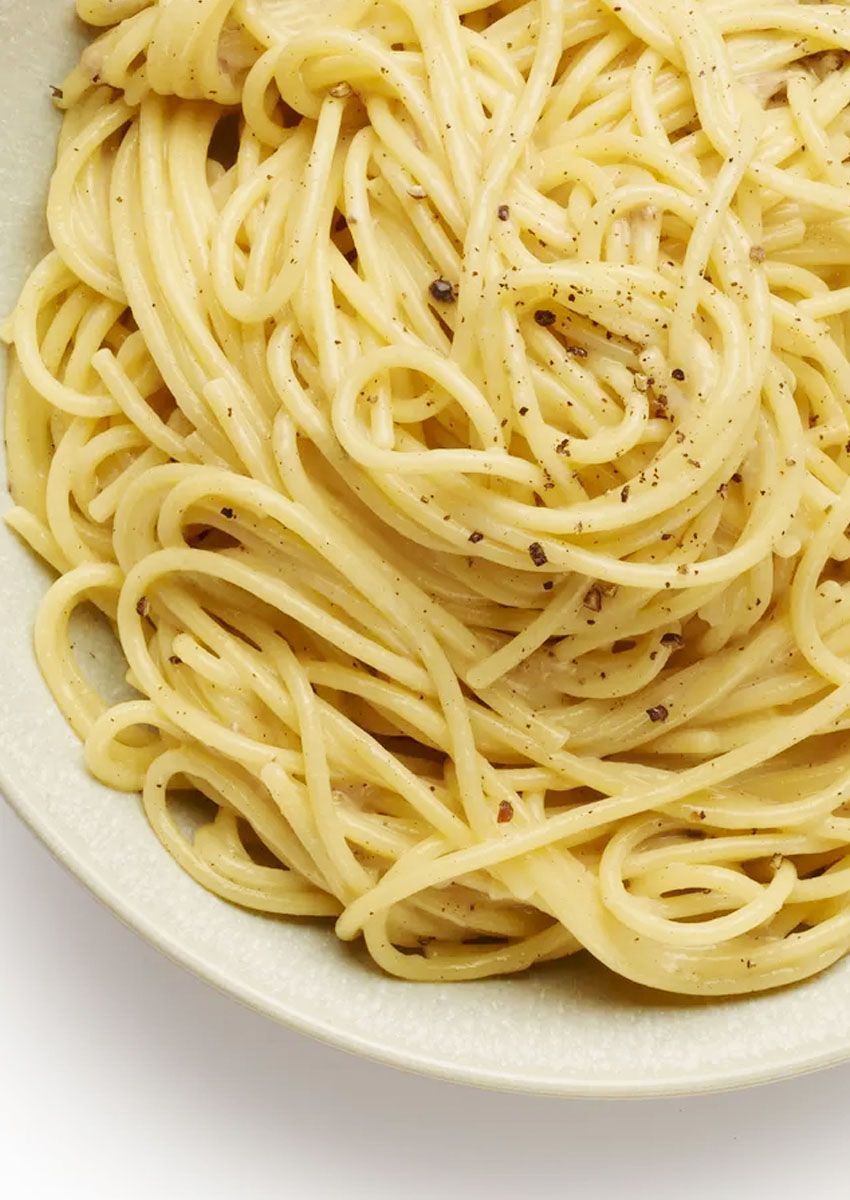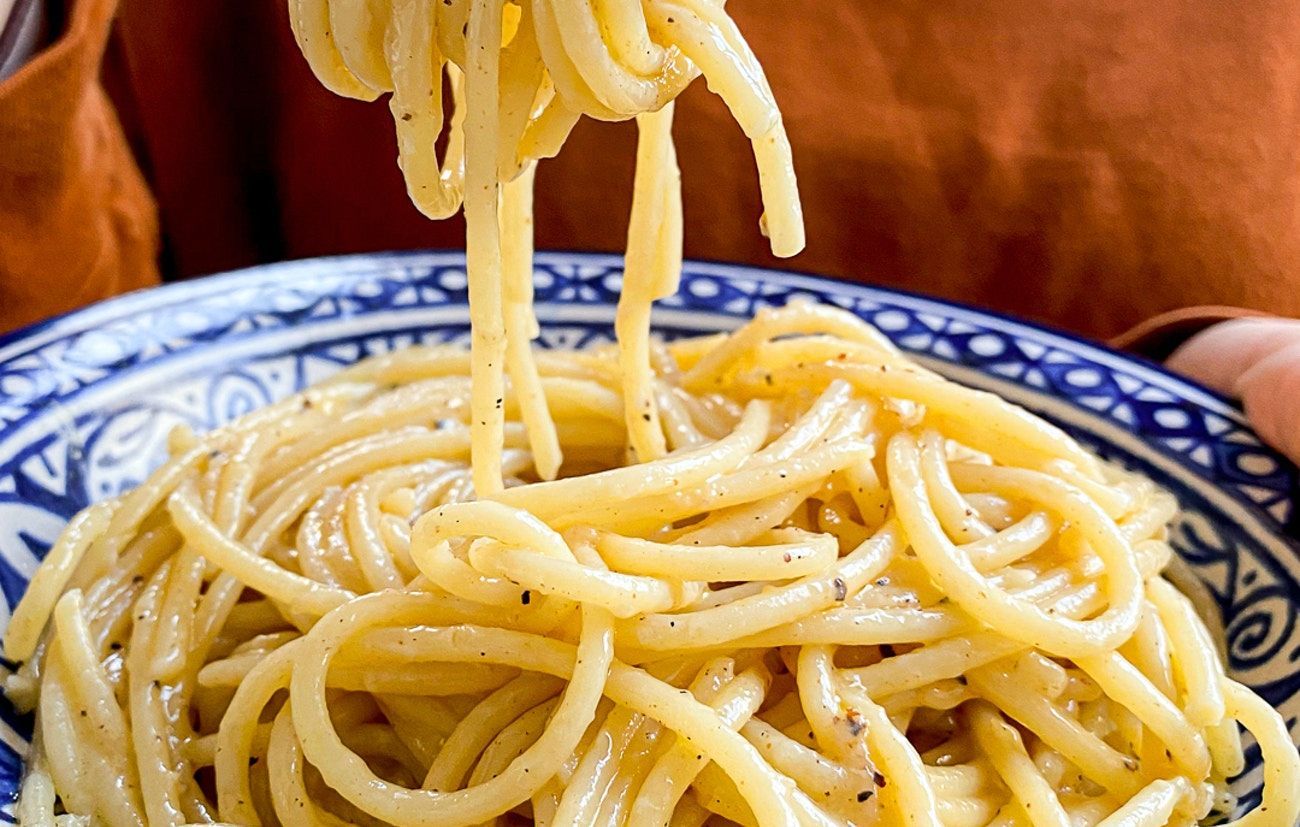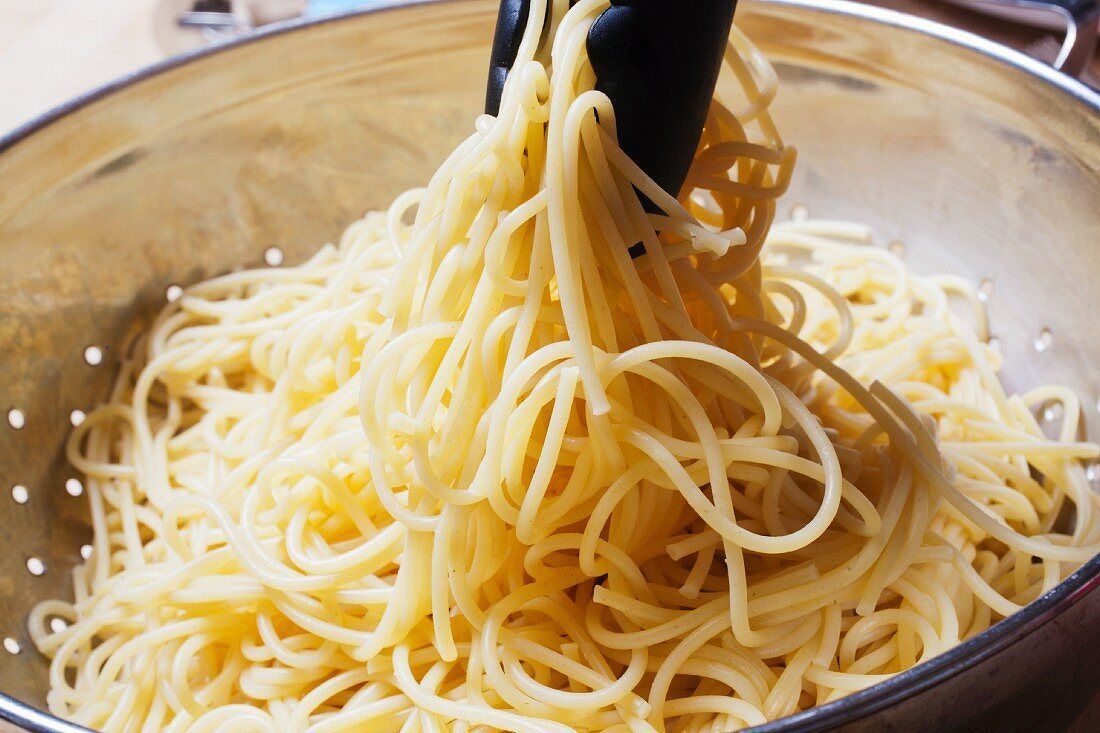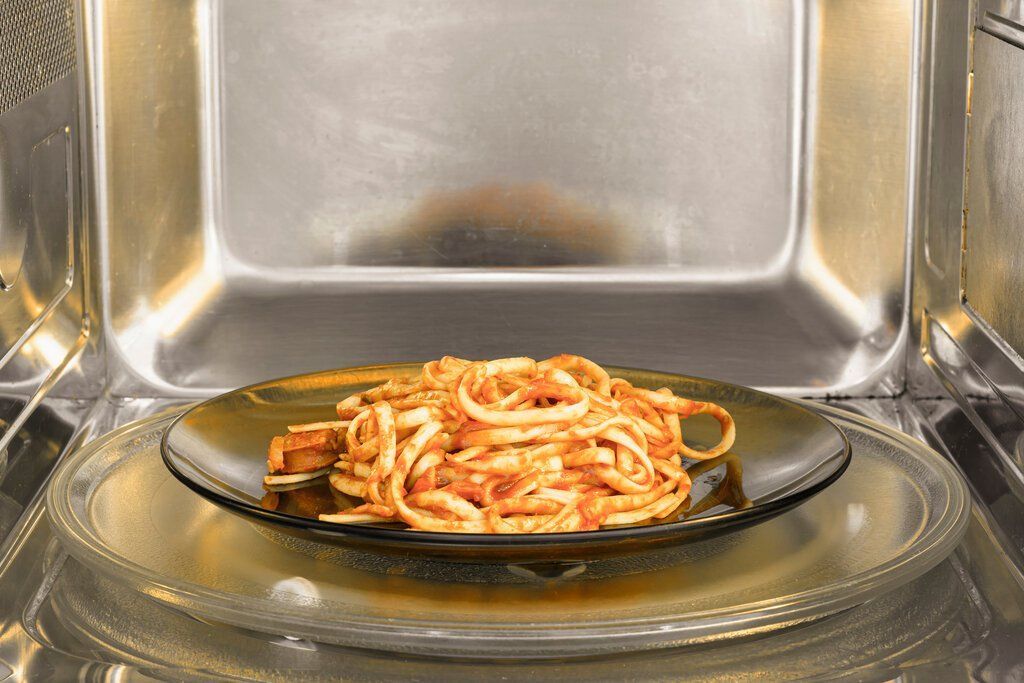Our recommendations are made independently. We may receive commissions from purchases made via our links.
How to Reheat Pasta
Have some leftover pasta in the fridge? Follow our guide to find out how to reheat pasta and make a second meal in only a few short minutes!
As one of the most popular dishes in the world, needless to say, it would be super useful to know how to reheat pasta. You never know when you may have a container of leftovers in your fridge.

However, if you’re reading this, there’s a good chance that you have some sitting in your fridge right now. This guide can help you figure out what to do with them in a couple of short minutes.
Can You Reheat Pasta?
Most definitely. Though the quality won’t be as good as it once was when the noodles were still fresh, if done correctly, it will still taste divine.
Before you proceed, it’s important to determine if your pasta has been sauced or not.
As plain pasta isn’t protected by sauce, it is more prone to drying out when reheated. On the other hand, sauced or baked pasta can be cooked more heavy-handedly as it is better insulated against the heat.
The Best Ways to Reheat Pasta
1. Plain Pasta
For plain pasta, we recommend that you reheat it with one of two methods: boiling on the stovetop or reheating in the microwave. The long cooking time in the third method (baking in the oven) can cause the naked pasta to dry out.

Boiling on the stovetop is the best method, bar none, for drying plain pasta. It basically involves dunking your leftover pasta in a pot of boiling water. The heat from the boiling water will re-cook your pasta. Since it’s dipped in water, the pasta won’t suffer from moisture loss or become mushy, either.
An alternative is to zap the pasta in the microwave. It’s quicker and only takes a couple of minutes for the pasta to reach the right temperature.
One problem is that the microwave is known for causing excessive drying. Fortunately, if you cover up the pasta well enough, you can control the amount of lost moisture. This will prevent the pasta from becoming too dry.
2. Sauced Pasta
As for sauced pasta, you can use one of two methods: in the oven or in the microwave. For obvious reasons, you can’t use the stovetop-boiling method. The sauce will make a huge mess in the pot.

Like we mentioned earlier, sauced pasta is best reheated in the oven. The oven generates a more gentle and stable heat than the microwave, allowing the pasta to warm up more evenly.
The disadvantage is the long cooking time (around 20 minutes). Fortunately, the sauce provides a protective layer against the heat, preventing the pasta from drying out.
If you don’t have an oven available, it’s still okay to reheat in the microwave. Tightly cover your pasta, and it should be fine.
How to Reheat Pasta: Step-by-Step Instructions
1. Boiling on the Stove
This method will only work with plain pasta.
Step 1: Boil a Pot of Salt Water
Bring out a large pot and fill it with water. For every pound of pasta that you intend to reheat, add 1 ½ tablespoons of salt to the pot.
When you cook pasta, seasoning the water is an absolute must. Even a pinch can significantly enhance its overall flavor. The same applies when you reheat it.
Step 2: Boil the Pasta

When the water in the pot begins to boil, you can proceed to cook your pasta.
Put the leftover pasta into a metal colander, then lower it into the boiling water. Dip for 30 seconds, then remove the colander from the pot.
Step 3: Sauce and Serve
Toss the reheated pasta together with your leftover sauce, garnish, then serve.
Boiling is a reheating method that’s only used for a select number of recipes. At HealthyRecipes101, we have two other reheating guides that use the same process.
First is our guide on how to reheat corn on the cob, which includes a section about boiling on the stovetop. The technique is remarkably similar to reheating lasagna.
Second is our guide on reheating crab legs. If you’re a fan of shellfish, definitely check out this article!
2. Reheating in the Microwave
This method will work for both plain and sauced pasta.
Step 1: Prepare Your Pasta
Because the microwave can quickly dry out your pasta if it’s left unprotected, it’s important to prepare it first.
For starters, put your pasta on a microwave-safe plate.

If you have plain pasta, you can drizzle olive oil onto it. The oil will form a protective layer against the harsh heat and lock moisture in, keeping the pasta from drying out.
On the other hand, if your pasta has already been tossed, it has already been adequately protected. All you need to do is lightly spread the mixture on the plate to make sure it’s evenly distributed. After that, you can proceed to step 2.
Step 2: Cover Up the Plate
Cover up the plate and the pasta with plastic wrap. Make sure to leave one end slightly open to let the steam escape.
If you don’t have plastic wrap, you can use a damp piece of paper towel instead.
Step 3: Reheat the Pasta
Set the microwave to medium-low power (around 30%). This will minimize drying.
Zap for 1 minute. Open the microwave and check on the pasta to see how it’s fairing. If it isn’t warm enough yet, stir the pasta and continue cooking in short bursts of 15 or 30 seconds until you have reached the desired temperature.
Step 4: Serve
Toss your plain pasta with sauce and serve. If it has already been sauced, stir it one more time before serving.
The microwave is usually not our top selection for reheating. It dries out food very quickly, so the quality of the rewarmed food usually isn’t the best. However, it’s still a good alternative to rely on when you have to reheat food in a pinch.
You can reheat steak in the microwave decently if done in controlled bursts.
Slices of prime ribs can be given a few good zaps in the microwave to bring them back to temperature, too. If you’re interested, you can check out our guide on reheating prime ribs at the link.
However, the microwave isn’t always the least recommended method for reheating. For example, it is one of the best ways to reheat rice, so you don’t always have to shy away from it.
3. Reheating in the Oven
This method will work only with sauced pasta.
Step 1: Prepare the Pasta for the Oven
Put your leftover pasta into an oven-safe dish or shallow bowl. Cover it up with aluminum foil to prevent excessive drying.

Step 2: Preheat the Oven
Bring the inside of your oven up to 325°F.
Once the temperature has been reached, put the pasta into the oven.
Step 2: Bake
Bake the pasta in the oven for 20 minutes.
When the timer starts beeping, open the oven door and stick a metal fork or spoon into the pasta. Seat the utensil there for 10 or 20 seconds, then take it out. Touch its tip to see if it’s hot or not. If it is, the pasta is ready. If it’s still a bit cold, the pasta will need an extra 10 minutes in the oven.
Step 3: Serve
Bring the pasta out of the oven and serve straight away.
The oven is usually one of the most recommended methods to reheat food. Its gentle and stable heat can perfectly warm up food without drying it out too much.
If you love pasta, you will be glad to know that you can reheat lasagna in the oven, as well. It’s the best way to warm up leftover lasagna, as a matter of fact.
If you also have a container of mashed potatoes in the fridge, you can opt to warm it up, too. Oven-reheated mashed potatoes pair really well with pasta and can significantly improve the quality of your meal.
Lastly, for Italian-lovers, the oven is also a good way to reheat pizza.
Conclusion
Overall, it’s not too difficult to learn how to reheat pasta. Compared to many other foods, reheating pasta is incredibly simple. If you follow the instructions carefully, you will be able to pull it off on the first try without breaking a sweat.
Test one of the three methods in your kitchen and tell us how it goes in the comments!
In the meantime, if you’re looking for some leisure reads, we have a couple more reheating guides worth reading. Just in case you end up with anything other than pasta in your fridge:
- How to Reheat Fried Chicken: fried chicken is an undisputed champion of fast foods. Savory, satiating, and quite a bit addicting, it’s a weekend staple. This quick guide will show you a few methods you can use to deal with leftover fried chickens.
- How to Reheat Fries: fries are yet another party staple. You will also be more likely to have leftover fries than any other food on this list. Typically, most people throw the leftovers in the trash. If you don’t want to waste any fries, they can be reheated. Here are a few methods to try,
- How to Reheat Rotisserie Chicken: rotisserie chicken is a quick, delicious recipe for family dinners. If you have a few leftover cuts, you can reheat them the day after and make yourself a second meal. Details are enclosed here in this article.
- How to Reheat Chicken Wings: similar to fried chicken, chicken wings are hugely popular on weekends and party nights, too. Considering how easy it is to reheat and eat later on, don’t throw it away. Our guide has four easy methods you can follow to reheat your leftover wings.
- How to Reheat Salmon: most people are rightfully nervous when it comes to reheating seafood. Unlike meat, there is a lot of seafood that’s not suitable for reheating. Fortunately, salmon isn’t part of this list. You can safely reheat it (if you store it correctly). This article can show you how to do exactly that.





